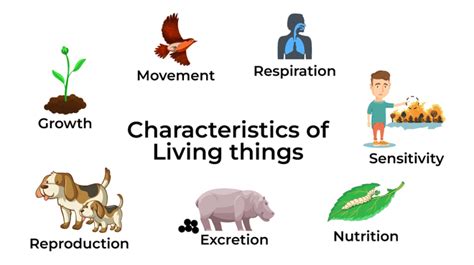
All life on Earth, from bacteria to humans, operates under a single, unifying rule: living things adjust their composition to maintain maximal stability in the face of environmental changes, according to a new study published in the journal Proceedings of the National Academy of Sciences. This principle, dubbed the “Compensation Law,” suggests organisms alter their internal makeup to counteract external disruptions, striving to minimize deviations from their optimal state.
Researchers at the Santa Fe Institute and collaborators have presented evidence suggesting that the intricate biochemical networks within cells are organized to dampen the effects of external disturbances. This foundational principle challenges traditional views that focus on specific adaptations to individual environmental factors. Instead, it proposes a universal mechanism governing all life, emphasizing inherent stability-seeking behavior as the primary driver.
The Compensation Law posits that organisms do not simply react passively to their environment, but actively manipulate their internal biochemistry to maintain a stable and optimal internal state. This stability, the researchers suggest, is crucial for survival and reproduction. The study highlights that understanding this fundamental principle could revolutionize our understanding of biology, impacting fields ranging from medicine to ecology.
The team’s analysis encompassed a broad range of organisms, including bacteria, fungi, plants, and animals. Data were gathered from publicly available databases, spanning diverse datasets like gene expression, protein abundance, and metabolite concentrations. This large-scale approach enabled the researchers to identify consistent patterns across different life forms.
According to the study, the Compensation Law manifests as a coordinated shift in the relative abundances of different cellular components. For example, if an organism is exposed to a temperature increase, it might alter the levels of specific proteins and metabolites to counteract the destabilizing effects of the heat. This compensatory response aims to minimize the overall disruption to the cell’s internal environment.
The researchers propose that the Compensation Law arises from the interconnected nature of biochemical networks within cells. These networks are organized in such a way that disturbances in one part of the system trigger compensatory changes in other parts, effectively buffering the cell against external shocks. This inherent resilience, they argue, is a fundamental property of life.
Dr. Jeremy Owen, one of the study’s lead authors and a researcher at the Santa Fe Institute, explains the significance of the findings: “We’ve found evidence for a principle that suggests life isn’t just about adapting to change, but about actively minimizing it. This compensation law suggests that organisms are fundamentally stability-seeking entities.”
The study involved mathematical modeling and statistical analysis of extensive datasets. The models predicted that organisms exhibiting stronger compensatory responses would be more resilient to environmental fluctuations. The empirical data largely supported these predictions, providing further evidence for the validity of the Compensation Law.
“This is a potentially paradigm-shifting idea,” said Dr. Peter Wills, a biophysicist not involved in the study. “It suggests that we need to rethink our approach to understanding life, focusing less on individual adaptations and more on the underlying principles that govern stability.”
The findings have significant implications for various fields. In medicine, understanding the Compensation Law could lead to new strategies for treating diseases. By identifying the compensatory mechanisms that are disrupted in disease states, researchers could develop targeted therapies to restore stability. For example, in cancer, the Compensation Law might provide insights into how tumors maintain their stability despite the presence of anti-cancer drugs.
In ecology, the Compensation Law could help predict how ecosystems respond to environmental changes. By understanding the compensatory mechanisms that allow organisms to tolerate stress, scientists could better assess the vulnerability of ecosystems to climate change and other threats. This information could be used to develop more effective conservation strategies.
Moreover, the Compensation Law has implications for the study of aging. The researchers suggest that the decline in compensatory capacity with age might contribute to the increased vulnerability of older organisms to environmental stressors. Understanding the mechanisms that regulate compensatory capacity could potentially lead to interventions that promote healthy aging.
The researchers acknowledge that further research is needed to fully understand the complexities of the Compensation Law. One challenge is to identify the specific biochemical pathways that mediate compensatory responses in different organisms. Another challenge is to develop more sophisticated models that can capture the dynamic interactions between organisms and their environment.
Despite these challenges, the study represents a significant step forward in our understanding of life. By proposing a unifying principle that governs all living things, the researchers have provided a new framework for studying biology. The Compensation Law has the potential to revolutionize our understanding of life, impacting fields ranging from medicine to ecology.
The research highlights the importance of interdisciplinary collaboration in advancing scientific knowledge. The study brought together researchers from diverse fields, including biology, physics, mathematics, and computer science. This interdisciplinary approach was essential for uncovering the hidden patterns in the data and developing the theoretical framework for the Compensation Law.
The findings have also sparked debate within the scientific community. Some researchers have questioned the universality of the Compensation Law, arguing that it might not apply to all organisms or environments. Others have suggested that the observed patterns could be explained by other mechanisms. However, the researchers maintain that the evidence for the Compensation Law is compelling and that it provides a valuable framework for understanding life.
The team plans to continue investigating the Compensation Law in future studies. They are particularly interested in exploring the role of the Compensation Law in the evolution of life. They hypothesize that the ability to compensate for environmental disturbances has been a key factor in the success of life on Earth.
The study’s findings underscore the interconnectedness of all living things. By identifying a unifying principle that governs all life, the researchers have highlighted the shared ancestry and fundamental similarities between different organisms. This understanding is crucial for addressing the global challenges facing humanity, such as climate change and biodiversity loss.
The research was funded by several organizations, including the National Science Foundation and the Santa Fe Institute. The researchers hope that their work will inspire further research into the fundamental principles that govern life. They believe that a deeper understanding of these principles is essential for addressing the complex challenges facing humanity.
In conclusion, the discovery of the Compensation Law represents a significant milestone in our understanding of life. By identifying a unifying principle that governs all living things, the researchers have provided a new framework for studying biology. The Compensation Law has the potential to revolutionize our understanding of life, impacting fields ranging from medicine to ecology. This principle emphasizes that living organisms are not passive recipients of environmental change, but active agents striving to maintain stability and optimal internal conditions. Further exploration of this law promises transformative insights into the nature of life itself.
Frequently Asked Questions (FAQ)
1. What is the Compensation Law, and what does it propose?
The Compensation Law is a newly proposed scientific principle suggesting that all living organisms, from the simplest bacteria to complex animals like humans, adjust their internal composition to maintain stability in the face of environmental changes. It proposes that organisms actively minimize deviations from their optimal internal state by altering their biochemistry to counteract external disruptions, rather than simply passively adapting to them. According to Dr. Jeremy Owen, a lead author of the study, the Compensation Law suggests that “life isn’t just about adapting to change, but about actively minimizing it. This compensation law suggests that organisms are fundamentally stability-seeking entities.”
2. What kind of evidence supports the Compensation Law?
The evidence supporting the Compensation Law comes from a large-scale analysis of publicly available data encompassing a wide range of organisms, including bacteria, fungi, plants, and animals. The data included information on gene expression, protein abundance, and metabolite concentrations. Researchers used mathematical modeling and statistical analysis to identify consistent patterns across different life forms, revealing coordinated shifts in the relative abundances of cellular components in response to environmental changes. The models predicted that organisms exhibiting stronger compensatory responses would be more resilient to environmental fluctuations, which was largely supported by the empirical data.
3. How does the Compensation Law differ from traditional views of biological adaptation?
Traditional views of biological adaptation often focus on specific adaptations to individual environmental factors. The Compensation Law, however, emphasizes a more universal mechanism governing all life, focusing on the inherent stability-seeking behavior as the primary driver. Instead of viewing organisms as passively reacting to their environment, the Compensation Law suggests they actively manipulate their internal biochemistry to maintain a stable and optimal internal state. This perspective shifts the focus from individual adaptations to a fundamental principle of resilience and homeostasis.
4. What are the potential implications of the Compensation Law for medicine?
The Compensation Law could have significant implications for medicine by providing new strategies for treating diseases. Understanding the compensatory mechanisms that are disrupted in disease states could lead to the development of targeted therapies to restore stability. For example, in cancer, the Compensation Law might offer insights into how tumors maintain their stability despite anti-cancer drugs. By identifying and modulating these compensatory mechanisms, researchers could potentially develop more effective and less toxic treatments.
5. How might the Compensation Law be used to understand and address climate change?
The Compensation Law could help predict how ecosystems respond to environmental changes caused by climate change. By understanding the compensatory mechanisms that allow organisms to tolerate stress, scientists could better assess the vulnerability of ecosystems to climate change and other threats. This information could then be used to develop more effective conservation strategies and policies aimed at mitigating the impacts of climate change on biodiversity and ecosystem function. Understanding how different species compensate for stress could inform strategies for preserving vulnerable ecosystems and promoting resilience in the face of a changing climate.
6. What fields beyond medicine and ecology might be impacted by the Compensation Law?
The Compensation Law has the potential to impact various fields, including aging research, evolutionary biology, and even synthetic biology. In aging research, the decline in compensatory capacity with age might contribute to the increased vulnerability of older organisms to environmental stressors. Understanding the mechanisms that regulate compensatory capacity could potentially lead to interventions that promote healthy aging. In evolutionary biology, the Compensation Law could provide insights into the evolution of resilience and adaptation. In synthetic biology, the principles of the Compensation Law could be used to design more robust and stable artificial biological systems.
7. What are some of the challenges in further researching and validating the Compensation Law?
Further research and validation of the Compensation Law face several challenges. One challenge is identifying the specific biochemical pathways that mediate compensatory responses in different organisms. This requires detailed and complex experiments to map the intricate networks within cells. Another challenge is developing more sophisticated models that can capture the dynamic interactions between organisms and their environment. These models need to account for the complexity of biological systems and the multitude of factors that can influence compensatory responses. Moreover, it is crucial to test the universality of the Compensation Law across a wider range of organisms and environments to determine its limitations.
8. Is there any debate within the scientific community regarding the Compensation Law?
Yes, the discovery of the Compensation Law has sparked debate within the scientific community. Some researchers have questioned the universality of the law, arguing that it might not apply to all organisms or environments. Others have suggested that the observed patterns could be explained by other mechanisms or statistical artifacts. It’s important to note that scientific progress often involves debate and scrutiny, and these discussions are essential for refining and validating new theories.
9. What are the next steps for researchers studying the Compensation Law?
Researchers plan to continue investigating the Compensation Law in future studies. They are particularly interested in exploring the role of the Compensation Law in the evolution of life, testing the hypothesis that the ability to compensate for environmental disturbances has been a key factor in the success of life on Earth. Other research directions include investigating the specific biochemical pathways involved in compensation, developing more sophisticated models to predict compensatory responses, and exploring the implications of the Compensation Law for various fields, such as medicine and ecology.
10. How does this research highlight the interconnectedness of life on Earth?
By identifying a unifying principle that governs all life, the Compensation Law highlights the shared ancestry and fundamental similarities between different organisms. This understanding is crucial for addressing the global challenges facing humanity, such as climate change and biodiversity loss. Recognizing that all living things are interconnected and governed by similar principles underscores the importance of taking a holistic and integrated approach to environmental conservation and sustainability. The research emphasizes the need for a deeper understanding of the fundamental principles that govern life in order to effectively address the complex challenges facing our planet.
11. What specific technological advances facilitated this research?
The researchers leveraged advances in several areas, including high-throughput data collection, bioinformatics, and computational modeling. The availability of large-scale datasets on gene expression, protein abundance, and metabolite concentrations, coupled with powerful computational tools, enabled the researchers to analyze vast amounts of data and identify the patterns that support the Compensation Law. Advances in bioinformatics have made it possible to integrate and analyze data from diverse sources, while computational modeling has allowed researchers to simulate the behavior of complex biological systems.
12. Can the Compensation Law be used to predict the behavior of invasive species?
The Compensation Law could potentially be used to predict the behavior of invasive species. By understanding how an invasive species compensates for the environmental conditions in its new habitat, scientists could better predict its spread and impact on native ecosystems. This information could be used to develop more effective strategies for controlling invasive species and protecting biodiversity. For instance, if a species compensates by altering its metabolic pathways to thrive in a nutrient-poor environment, understanding those specific adaptations could inform targeted removal efforts.
13. How does the Compensation Law relate to the concept of homeostasis?
The Compensation Law is closely related to the concept of homeostasis, which is the ability of an organism to maintain a stable internal environment despite changes in the external environment. The Compensation Law provides a more detailed explanation of the mechanisms that underlie homeostasis, suggesting that organisms actively adjust their internal biochemistry to counteract external disturbances and maintain a stable and optimal internal state. In essence, the Compensation Law can be viewed as a fundamental principle that drives and explains the phenomenon of homeostasis.
14. What is the role of feedback loops in the Compensation Law?
Feedback loops are crucial to the operation of the Compensation Law. These loops, prevalent in biochemical networks, allow organisms to sense changes in their internal environment and adjust their physiology accordingly. Negative feedback loops, in particular, are essential for maintaining stability by dampening the effects of external disturbances. For example, if an organism experiences a rise in temperature, negative feedback loops might activate mechanisms to lower the temperature back to its optimal level. The Compensation Law suggests that these feedback loops are not just isolated mechanisms, but are integrated into a broader network that coordinates compensatory responses across multiple levels of biological organization.
15. Can the Compensation Law explain differences in resilience between species?
Yes, the Compensation Law can potentially explain differences in resilience between species. Species that possess more robust and efficient compensatory mechanisms may be better able to tolerate environmental stressors and adapt to changing conditions. For example, some species may have more versatile metabolic pathways or more sophisticated regulatory networks that allow them to quickly adjust their internal environment in response to disturbances. By comparing the compensatory capacities of different species, researchers could gain insights into the factors that contribute to resilience and vulnerability. This knowledge could be particularly valuable for conservation efforts aimed at protecting endangered species in the face of climate change and other threats.









